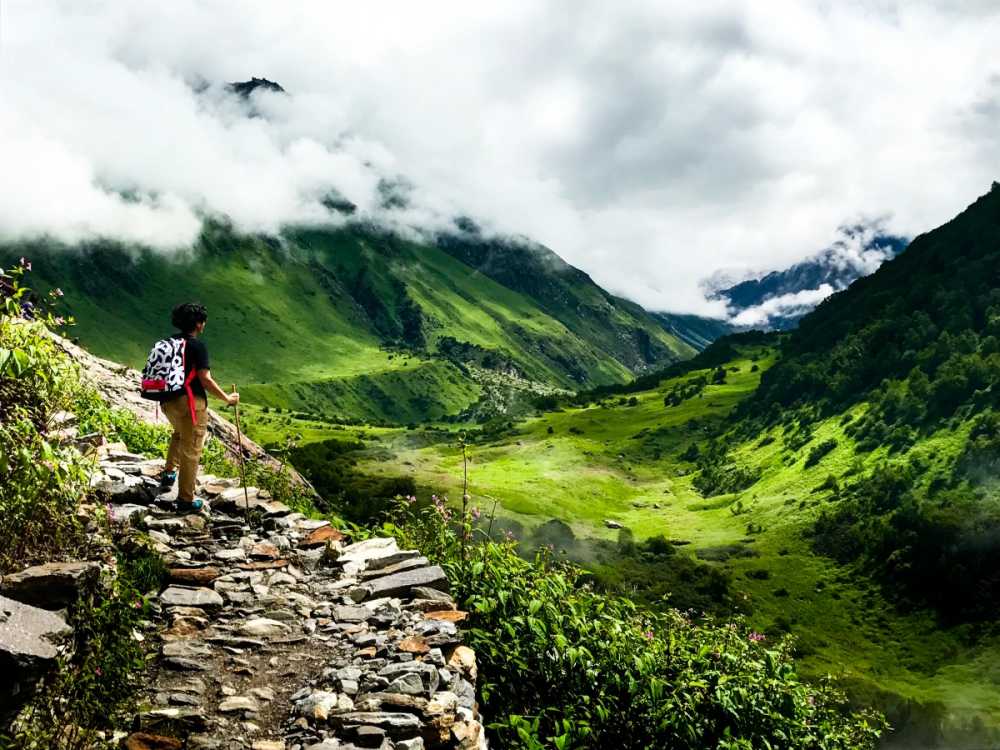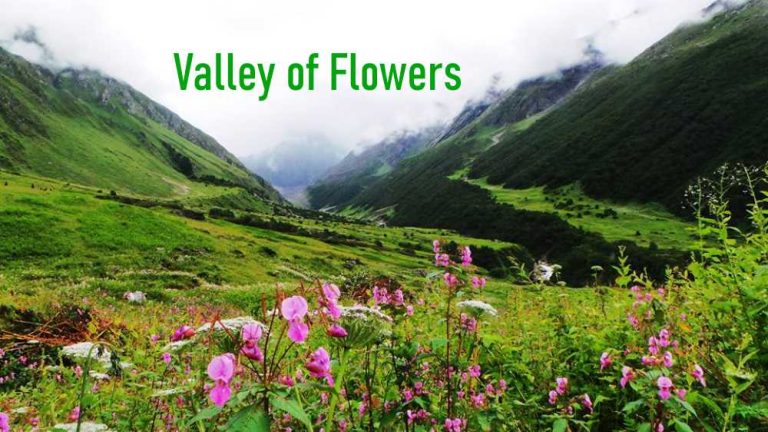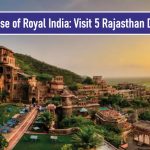The Valley of Flowers is a mesmerizing and enchanting destination nestled amidst the majestic Himalayas in Uttarakhand, India. It is spread over an area of approximately 87 square kilometers. This picturesque valley is famous for its vibrant meadows. The valley remains inaccessible for most of the year due to heavy snowfall. Still, it transforms into a heavenly paradise during the summer months of June to September.
The valley was discovered by British mountaineer Frank Smythe in 1931 and was declared a national park in 1982. Its inclusion in UNESCO’s World Network of Biosphere Reserves further highlights its ecological significance. The valley is home to an astonishing variety of flora, with over 600 species of flowering plants. These flowers’ vibrant colors and delicate fragrances create a surreal and captivating ambiance.
The Valley of Flowers also offers breathtaking views of snow-capped peaks, glistening glaciers, and cascading waterfalls. The backdrop of towering mountains, including Nanda Devi, India’s second-highest peak, adds to the grandeur of this natural wonderland. The valley is a haven for nature enthusiasts, botanists, and trekkers. They can explore its numerous trails, meandering rivers, and alpine forests teeming with wildlife.
Visiting the Valley of Flowers is a remarkable experience that requires a moderate trek of around 17 kilometers. The trek starts from the base camp at Govindghat. The journey is arduous, but the reward of witnessing the awe-inspiring beauty of the valley is unparalleled. Every step along the trail reveals a new facet of nature’s artistry. It leaves visitors amazed and humbled by the sheer magnificence of the surroundings.
Story Behind the Valley of Flowers
The story behind the Valley of Flowers is steeped in mythology that add an air of mystique. According to local mythology, it is believed that the Hindu gods themselves created the valley. The tale revolves around Lord Hanuman, the monkey god and a devoted disciple of Lord Rama. He searched for a mythical herb called Sanjeevani to revive Lord Rama’s brother, Lakshmana. It is said that while searching for the herb, Lord Hanuman stumbled upon the breathtaking valley, a barren land. Legend has it that Lord Hanuman was captivated by the valley’s beauty and the blooming celestial flowers. He was so enamored that he forgot about his original quest and got lost in the enchanting surroundings. The gods, worried about Lord Hanuman’s prolonged absence, sent the mountain deity, Narada, to remind him of his duty.
Upon Narada’s arrival, Lord Hanuman realized his mistake. He collected a few flowers from the valley to offer Lord Rama. However, as soon as he plucked the flowers, the valley became a paradise. It bursts with an extraordinary array of colorful flowers. Lord Hanuman was awestruck by the divine spectacle before him. The gods are believed to have blessed the valley and declared it sacred. This divine intervention bestowed upon the valley its name – the Valley of Flowers. It became a place of pilgrimage and reverence for devotees and nature enthusiasts alike.
The story behind the Valley of Flowers captures the essence of its ethereal beauty. It serves as a reminder of the intertwined relationship between mythology and nature. The tale adds a touch of magic to this already captivating destination. It invites visitors to immerse themselves in the enchantment and wonder of this heavenly abode.

Nearby Places To Visit
Here are some nearby places to visit that complement your trip to the Valley of Flowers:
Hemkund Sahib: Situated close to the Valley of Flowers, Hemkund Sahib is a revered Sikh pilgrimage site. It is famous for its pristine glacial lake.
Badrinath: A significant pilgrimage destination for Hindus, Badrinath is one of Uttarakhand’s Char Dham (Four Abodes) temples.
Auli: Auli is a popular skiing destination and offers breathtaking panoramic views of the Himalayan range.
Joshimath: Joshimath is popular for its ancient temples, such as Narasimha Temple and the Adi Guru Shankaracharya Math.
Rishikesh: Rishikesh is famous for its ashrams, temples, and iconic Lakshman Jhula and Ram Jhula suspension bridges.
The Valley of Flowers is not just a physical destination but a spiritual and rejuvenating retreat that offers serenity to those seeking it. Plan your trip to this beautiful place with JapjiTravel.
The ideal time to visit there is June to September.
The journey to the Valley of Flowers begins with reaching the town of Govindghat in Uttarakhand, India. From Govindghat, a moderate trek of around 17 kilometers leads you to the valley. Alternatively, you can hire a pony or a mule to make the trek more comfortable.
Yes, there are accommodation options available near the Valley of Flowers. The base camp at Govindghat has a range of guesthouses and hotels where you can stay before starting the trek.







You must be logged in to post a comment.